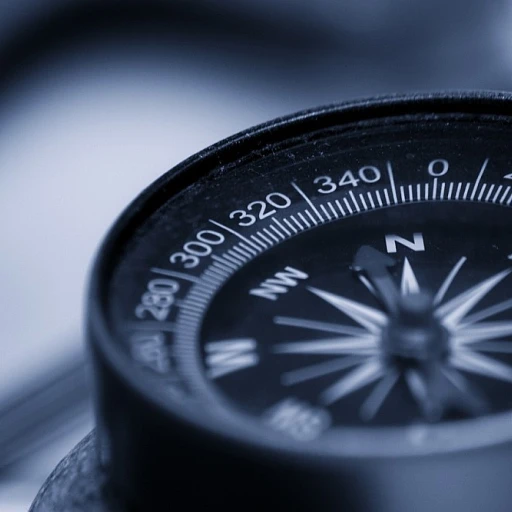Understanding the Role of a Continuous Improvement Manager
Defining the Continuous Improvement Manager's Role
The role of a Continuous Improvement Manager is pivotal in driving operational excellence within an organization. This position is not just about overseeing processes but involves a strategic approach to enhancing efficiency and quality across various business operations. A Continuous Improvement Manager works closely with teams to identify areas of improvement, implement lean manufacturing principles, and ensure that quality standards are consistently met.
Core Responsibilities and Skills
Continuous Improvement Managers are responsible for developing and executing improvement initiatives that align with the company’s goals. They often collaborate with senior managers and directors to ensure that these initiatives are in sync with the overall business strategy. Their expertise in lean sigma methodologies and problem-solving techniques allows them to streamline operations and improve productivity. Key skills for this role include project management, team leadership, and a strong understanding of business process management.
Importance of Experience and Certification
Experience plays a crucial role in the effectiveness of a Continuous Improvement Manager. Many professionals in this field have backgrounds in operations management or business administration, and they often hold certifications in lean sigma or other process improvement methodologies. These qualifications are essential for implementing successful improvement strategies and leading teams towards achieving operational excellence.
Impact on Business Operations
The influence of a Continuous Improvement Manager extends across various facets of a business. From supply chain management to plant operations, their efforts in process improvement can lead to significant cost savings and enhanced job performance. By fostering a culture of continuous improvement, they help businesses adapt to changes and stay competitive in the market.
For those interested in exploring effective strategies to enhance job performance, you can find more insights here.
Communication Strategies for Continuous Improvement
Effective Communication Techniques for Continuous Improvement Success
In the realm of continuous improvement, communication is a cornerstone in achieving operational excellence. A Continuous Improvement Manager plays a critical role in crafting and implementing communication strategies that foster a culture of innovation and progress. Here are some key techniques to consider:- Regular Updates: Keeping the team informed about ongoing improvement initiatives and progress can significantly enhance transparency and motivation. Regular newsletters or team meetings can be an effective way to communicate these updates.
- Feedback Mechanisms: Creating channels through which team members can provide feedback is an essential aspect of continuous improvement. This can be achieved through surveys, suggestion boxes, or digital platforms that allow for anonymous contributions.
- Clear Objectives and Expectations: Clearly defining project goals and performance expectations helps to align the team’s efforts. This clarity not only provides direction but also serves as a basis for evaluating success and areas for improvement in business process management.
- Collaborative Workshops: Interactive workshops or training sessions can be instrumental in educating teams about new lean manufacturing techniques, problem-solving skills, and process improvement methodologies.
- Visual Management Tools: Utilizing tools like dashboards, Kanban boards, or process maps can enhance clarity and focus. These tools provide a visual representation of workflows and improvements, making it easier for teams to grasp complex information quickly.
Aligning HR and Continuous Improvement Goals
Harmonizing Efforts Between HR and Continuous Improvement
The intricate relationship between Human Resources (HR) and continuous improvement is crucial for elevating workplace efficiency. Aligning HR and continuous improvement goals focuses on synchronizing processes, enhancing team collaboration, and driving corporate success. To achieve this alignment, several strategies can be employed, ensuring that both departments work in harmony and maintain a consistent direction. To start with, developing a mutual understanding of each other’s objectives and responsibilities lays the groundwork for effective collaboration. HR professionals and continuous improvement managers should engage in regular meetings to discuss overlapping projects and coordinate initiatives. This method not only clears up potential misunderstandings but also fosters an environment of trust and cooperation. By recognizing how each team's activities affect the other, businesses can unleash synergies that propel continuous improvement in every department. Furthermore, HR should play an essential role in identifying the right talent for continuous improvement roles. This is especially relevant for jobs such as improvement specialists, project managers, and operations managers. Identifying employees with key skills such as lean sigma certification, project management experience, and problem-solving prowess can accelerate the process improvement journey, bolstering operational excellence. By doing so, teams can ensure that qualified professionals drive improvement initiatives, yielding higher success rates. Another crucial aspect involves providing ongoing training and development programs. Continuous learning opportunities enable employees to stay updated on the latest methodologies in process improvement, lean manufacturing, and business process optimization. For HR, creating a robust framework that nurtures a culture of continuous learning not only aids in employee retention but also aligns with the broader business administration goals. Performance metrics also play a key role in aligning goals. By integrating HR metrics with those used by continuous improvement managers, businesses can identify areas that require attention and measure improvements over time. Metrics such as quality of work, efficiency gains, and employee engagement scores can serve as indicators of the initiatives' success and inform necessary adjustments. Finally, a shared vision should be developed to ensure that all stakeholders understand the mutual benefits of aligning HR and continuous improvement efforts. This shared vision can guide strategic decisions, leading to a harmonious integration of processes and objectives. By fostering a collaborative environment and aligning goals, businesses can create a robust structure that supports ongoing improvement. To gain a deeper understanding of these roles, exploring additional resources like understanding the role and responsibilities of a PCA can provide valuable insights.Tools and Techniques for Continuous Improvement
Embracing Tools for Effective Process Enhancement
To achieve operational excellence, the tools and techniques utilized by Continuous Improvement Managers are crucial. Understanding these resources can significantly impact the quality of improvements in both management and operations.
Utilizing Lean Manufacturing principles forms the backbone of improvement efforts. This involves streamlining processes to minimize waste and increase efficiency. Lean techniques encourage teams to focus on value-added activities, ensuring that every step in the process enhances overall business performance.
Lean Sigma is another indispensable tool for Continuous Improvement Managers. It integrates Six Sigma's data-driven approach with Lean's waste reduction focus, resulting in a holistic strategy for process improvement. By leveraging data analytics, managers can identify areas for improvement and implement solutions with precision.
Technology plays a pivotal role in driving continuous improvement. Software tools designed for project management and business process monitoring provide real-time insights that facilitate informed decision-making. These platforms allow teams to track progress, identify bottlenecks, and adjust strategies proactively.
The success of improvement initiatives often hinges on effective team collaboration and communication. Tools that foster collaboration such as digital workspaces enable plant operations and senior managers to communicate seamlessly across different departments and locations.
Moreover, fostering a culture of problem solving is essential. Training programs and workshops that enhance the skills of employees in identifying and solving process-related issues can make a notable difference. Encouraging employees to take active roles in improvement initiatives not only increases engagement but also steers the organization toward continuous innovation.
Adopting the right set of tools is instrumental in aligning the goals of improvement managers with those of the broader organization. This alignment should be a priority for directors and HR teams aiming to enhance both performance and job satisfaction across the board.
Overcoming Communication Barriers in Continuous Improvement
Identifying and Addressing Communication Gaps
One of the foremost challenges in continuous improvement is addressing communication barriers. These barriers often arise due to a lack of clarity in roles and expectations, which can impede the flow of process improvement strategies. It is vital for an improvement manager to identify these gaps early in the project lifecycle to ensure a seamless integration of initiatives aimed at operational excellence.
Fostering Inclusive Dialogue
Promoting a culture where team members feel empowered to express their ideas is crucial. This involves creating open lines of communication, where feedback is encouraged and valued. An operations manager with experience in lean manufacturing might initiate regular team meetings or feedback sessions, ensuring that every team member, from the plant specialist to the senior manager, participates actively in the improvement process.
Utilizing Technology to Bridge Gaps
Employing communication tools such as collaborative platforms and project management software can significantly enhance transparency and coordination across various departments. These tools aid in maintaining a comprehensive view of job progress and ensure that all stakeholders are aligned with the continuous improvement goals. The tools also facilitate real-time updates, which are essential for swift problem-solving and adaptation in a dynamic business environment.
Strengthening Cross-Departmental Collaboration
Aligning departments that might typically operate in silos is crucial to overcoming communication barriers. By integrating supply chain operations with business process and quality management teams, an improvement manager can create a cohesive approach to tackling improvement initiatives. Lean sigma methodologies can also be applied to refine these processes, ensuring all departments work towards shared objectives effectively.
Training and Development
Continuous training for team members in effective communication and lean practices is essential. By investing in manager certification and professional development, businesses in the United States can cultivate a workforce adept in both technical skills and communication strategies, which is indispensable for sustaining operational excellence. Regular workshops and seminars can help update the skills of a manager continuous and ensure they are equipped to handle emerging challenges.



